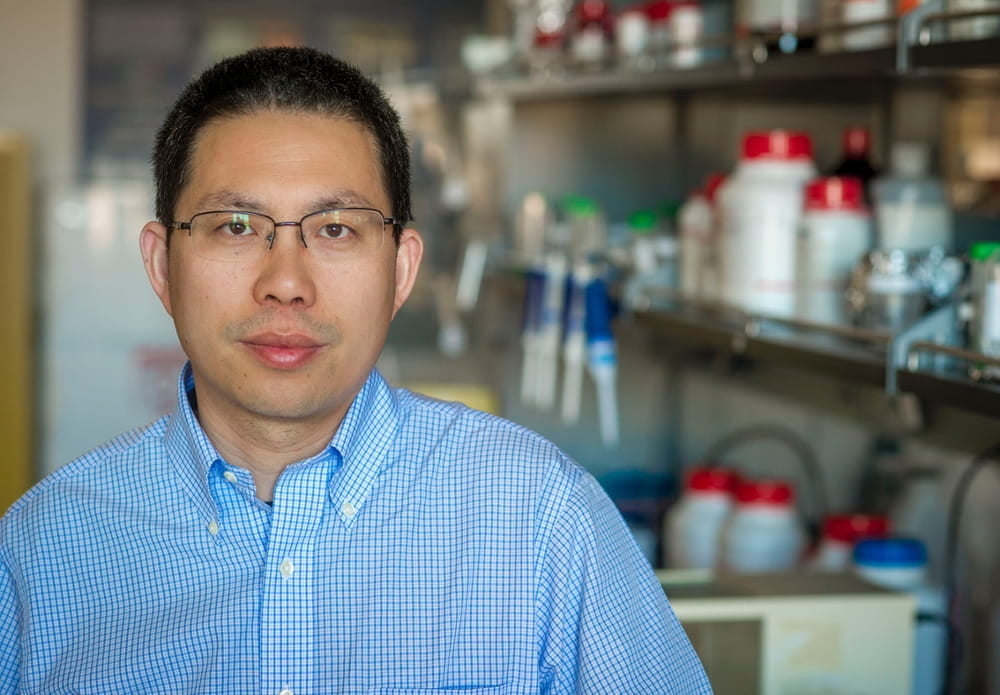With support from the National Institutes of Health, a University of Texas at Arlington bioengineering professor is developing a 3D-printed heart patch that could one day regenerate damaged cardiac muscle—potentially saving lives and improving long-term recovery for heart attack survivors.
When heart muscle is damaged due to a lack of blood and oxygen, the tissue dies and cannot fully regenerate, often leading to serious complications later in life. But thanks to advanced 3D-printing technology, Yi Hong, a distinguished research professor in the Department of Bioengineering, is working on a promising new approach to help the heart heal itself.
"Our goal is to create a smart, bioengineered patch that not only supports the heart structurally, but also promotes real regeneration of the damaged tissue," Dr. Hong said. "This research could offer new hope to patients who currently have few options beyond managing symptoms."
In collaboration with Ke Cheng, professor of biomedical engineering at Columbia University, Hong is developing an elastic, electrically conductive heart patch that releases therapeutic exosomes—tiny cell-derived particles that promote tissue regeneration and reduce inflammation to support healing.

The researchers aim to combine biomaterials engineering, stem cell therapy and advanced manufacturing to create a patch that closely mimics the heart's natural environment and electrical activity. The patch's conductive design will synchronize with the heartbeat and the exosomes will deliver molecular signals that guide the body's healing process.
"This is an exciting interdisciplinary effort that brings together some of the most innovative minds in cardiovascular repair," Hong said. "We are not just repairing damage; we are actively guiding the heart to heal itself."
The research has broad implications beyond heart attack recovery, potentially benefitting a range of cardiovascular conditions that result in muscle loss or weakening. If successful, it could pave the way for new standards in cardiac care and advance the field of regenerative medicine.
"Professor Hong continues to make significant advances in developing innovative tissue engineering solutions for heart tissue repair," said Michael Cho, chair of the Department of Bioengineering. "His latest NIH-funded project - focused on elastic exosome-releasing conductive patches for cardiac regeneration - highlights his pioneering and clinically impactful approach and offers promising new alternatives for treating myocardial infarction or heat attack, the leading cause of death worldwide."
The grant supporting this work was awarded by the National Heart, Lung, and Blood Institute, a division of the National Institutes of Health. The project aligns with UTA's strategic focus on health and the human condition, positioning the University at the forefront of potentially life-saving medical research.
About The University of Texas at Arlington (UTA)
Celebrating its 130th anniversary in 2025, The University of Texas at Arlington is a growing public research university in the heart of the thriving Dallas-Fort Worth metroplex. With a student body of over 41,000, UTA is the second-largest institution in the University of Texas System, offering more than 180 undergraduate and graduate degree programs. Recognized as a Carnegie R-1 university, UTA stands among the nation's top 5% of institutions for research activity. UTA and its 280,000 alumni generate an annual economic impact of $28.8 billion for the state. The University has received the Innovation and Economic Prosperity designation from the Association of Public and Land Grant Universities and has earned recognition for its focus on student access and success, considered key drivers to economic growth and social progress for North Texas and beyond.






